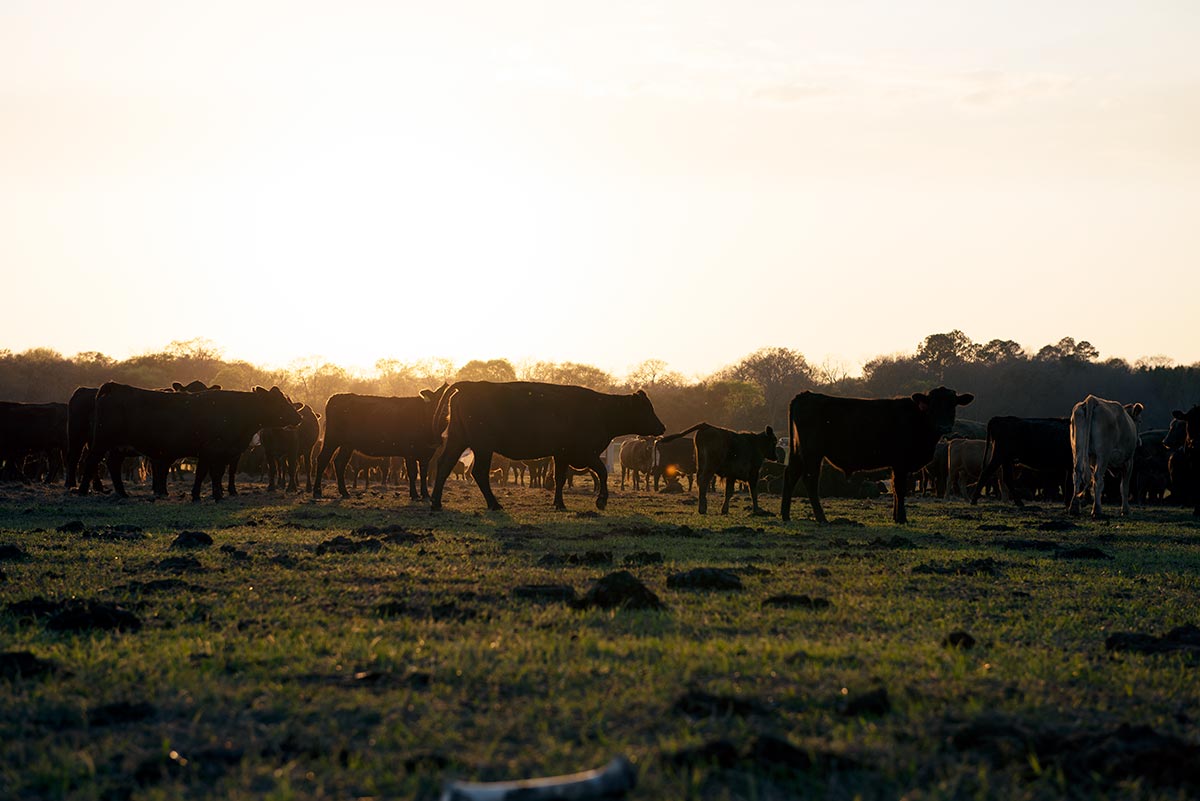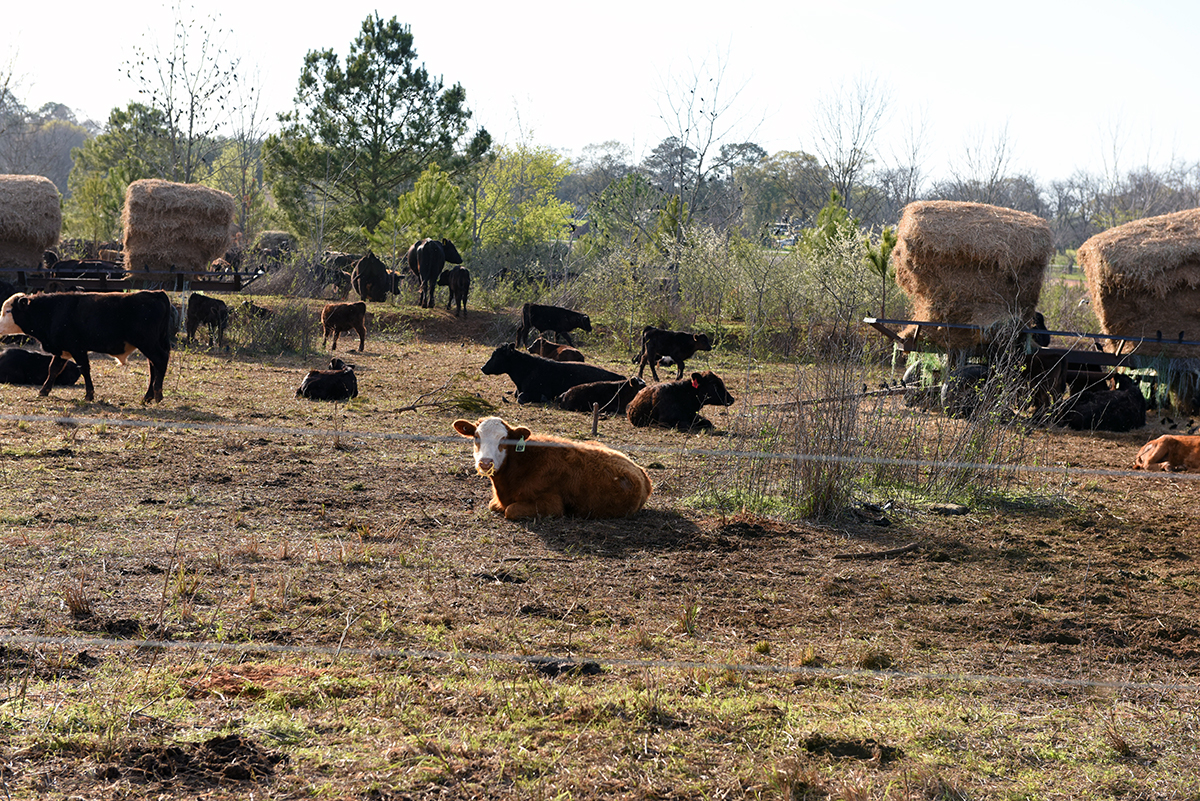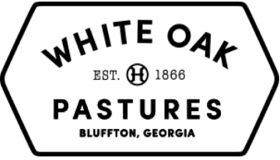
If White Oak Pastures is known for cattle, it's because cattle are our star grazers. Ruminants can cover a lot of ground, and they are the powerhouses behind our managed grazing practices. So how do we use the animal impact of cattle in our holistic land management strategy?
This is part three of a three-part series on how White Oak Pastures uses animal impact to regenerate land that was previously industrially row-cropped into productive, pastured savannah.
WATCH - The Animal Impact of Pasture-Raised Cattle
Check out Part One, Spotlight On Our Hard Working Poultry, or Part Two, Eating Like Our Pigs.
Covering Our Pastures With Beneficial Plant Life
In our pastures, our main goal is to encourage soil cover through establishing root systems of beneficial plants. Healthy root systems, made up of both annual and perennial grasses, help us retain our soil on our farm, as well as increase the amount of organic matter and sequester carbon in the soil (one of the reasons our beef production is carbon-negative). In general, our pastures have two different seasons of plants: cool-season annuals, and warm-season perennials.
Cool-season annuals include rye, crimson clover, and white dutch clover. These grasses are high in sugars, the legumes are high in protein - forage that encourages weight gain in livestock. The warm-season perennials are grass like Bahia and Bermuda grasses, which are hardy, disease-resistant forage with deep roots.
Cattle Help Encourage Plant Growth - Through Eating Plants
Our cattle help our pastures support healthy, robust flora and fauna ecosystems. Moving cattle actually stimulates their appetites and digestive systems. The more a herd is moved, the more they will eat - which means, ultimately, the more manure they will add back to the soil. This movement disturbs the soil, encouraging water percolation and seed germination, and cattle also add in natural fertilizer through urination and defecation.
We avoid overgrazing through a conscious, managed approach. If you take a look at our pastures, there are inches of grass left - but this is the tissue that the root, sometimes meters deep, may need to reestablish itself and propagate. If cattle overgraze the grass shoots, the roots may not have the ability to get the nutrition that they need. In general, we say that we let the cattle "take 50%, leave 50%", or in other words, "trample ⅓, eat ⅓, and leave ⅓".
We use our livestock to help transition different plant species as the seasons change. For example, we will move livestock through pasture to eat the cool-season grasses, just before the warm-season grasses are about to start growing. Moving cattle at a certain density through pasture, in a controlled time, also stimulates the natural competitive feeding instincts for their grazing. Cattle will graze all plant species (like grasses, legumes, and forbs) equally, which is essential for pasture health.
The Movement of Cattle Improves Bioproductivity
Holistic management allows us to use animal impact to positively impact the soil. The managed grazing speeds up the photosynthetic process for our plants, disturbs and aerates the soil, and adds nutrients to the land. Ultimately, through the holistic management system, the soil feeds the grass, grass feeds the livestock, and livestock feed the grass. This sets natural cycles in motion - improving the productivity of the land, even beyond what it would be as simply inactive pasture.

Cattle also play a role in converting former row-crop land into productive pasture, in a process that we like to call "hay bombing." We move a large herd onto newly-acquired land and keep them there for a few months, supplementing their feed with large amounts of hay. The cattle eat some hay, mow down other forage, and then trample plant life, hay, and their manure into the soil. This encourages the perennial and annual plants we seed in the fields to kickstart the regeneration of newly-acquired land.
Through their roaming appetites, our cattle encourage plant growth, soil regeneration, and carbon sequestration. Cows play an essential role in our managed grazing strategy, which is why grassfed beef continues to be a cornerstone of our farm's business.
When our customers purchase our beef products, they are continuing to support the way that we graze our pastures. A diverse selection of beef products, like grassfed ground beef, (that also comes in different grinds) aged grassfed ribeye, and grassfed beef brisket are available in our online Farm Store. In addition to beef cuts, you can consider dehydrated pet chews for your pets, or for the fashionable, consider our handmade leather goods, made in partnership with Pergamena Tannery.

